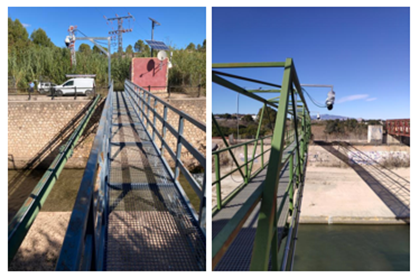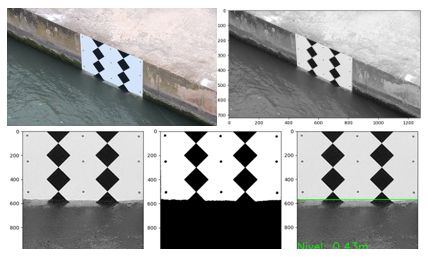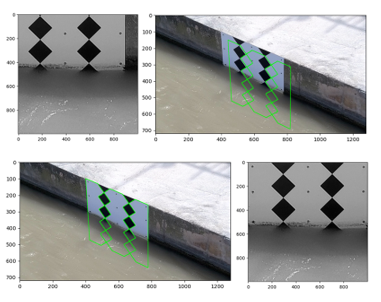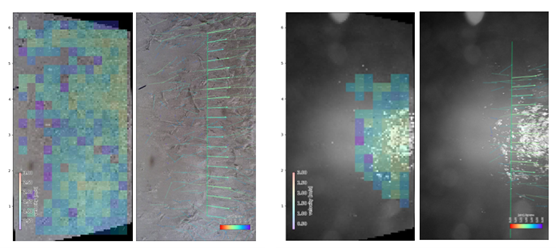The control and measurement of water flow play a crucial role in water resource management, flood prevention, and environmental preservation. The data obtained from these measurements are essential for various fields, including hydraulic engineering, environmental monitoring, wastewater management, and drinking water quality.
Accurate flow control enables the development of precise hydrodynamic models to predict flow scenarios, monitor water availability in rivers and reservoirs, and optimize the use of water resources. Additionally, it facilitates the early detection of surges, helping to mitigate potential damage caused by floods. In urban and industrial settings, it is essential for regulating wastewater discharge and ensuring compliance with environmental regulations.

Flood Rate Estimator Kernel (FREK): A Technological Breakthrough in Flow Measurement
Traditionally, measuring the flow rate of a watercourse has required level sensors and gauging stations, which, while providing accurate data, may present limitations in certain environments. With technological advancements, new, more versatile, and cost-effective measurement systems have emerged, such as the Flood Rate Estimator Kernel (FREK).
FREK is an advanced image-processing system that estimates the flow rate in a watercourse by analyzing images and videos captured by a camera. Its operation is based on three key processes:
1. Water Level Estimation
The FREK system uses strategically placed cameras to capture images of the water flow at control points. To ensure accuracy in detecting the water level, high-contrast panels with a checkerboard pattern are used. These panels serve two main functions: enhancing contrast between the wall and the water surface and enabling automatic image position adjustment. By converting the image to black and white, the system performs reprojection, cropping, and thresholding to precisely detect water edges.

In some cases, image misalignment may occur, requiring a calibration process based on the reference of the printed checkerboard pattern.

2. Surface Velocity Calculation
Once the water surface level is determined, the next step is to estimate the surface flow velocity. FREK employs the Large Scale Particle Image Velocimetry (LSPIV) algorithm, an advanced image analysis technique that detects the movement of particles on the water surface by comparing small changes between consecutive video frames. The use of night-vision cameras allows the system to operate both during the day and at night.

To accurately calculate surface velocity, the system considers the frame rate (fps) of the video and its georeferencing. The image is divided into cells, each assigned an average velocity value based on detected movement. This process generates vector fields that represent flow behavior across different cross-sections of the watercourse.

3. Flow Rate Determination
Using the data obtained on water level and surface velocity, FREK estimates the circulating flow rate. It selects the most representative cross-section of the watercourse through post-analysis. The surface velocity vectors from this section serve as input for a hydrological model that applies theoretical conversion factors and empirical data from control measurements, if available. By using velocity distribution formulas, the system determines the average velocity in the section and, ultimately, calculates the flow rate with high precision.

Benefits of the FREK System
This system represents a major breakthrough in flow measurement, combining low cost with high efficiency. By using accessible components such as video cameras, Raspberry Pi mini-computers, and industrial 4G router communication systems, FREK enables rapid and scalable deployment without requiring large infrastructure investments. Additionally, its design incorporates infrared night-vision cameras, ensuring continuous operation day and night without compromising measurement accuracy.
Another key advantage is that image processing is performed directly at the control point, eliminating the need to transmit large volumes of data to a processing center. The system analyzes images and videos in real time, transmitting only the results to the control center via a custom-developed communication application.
FREK is also easily integrable into existing systems, such as Automatic Hydrological Information Systems (SAIH), complementing and enhancing the data obtained from traditional sensors. All system-generated information is displayed on a monitoring panel, allowing users to visualize flow estimates, compare them with captured images, and cross-check them with additional sensor measurements.

The impact of FREK on water management and flood prevention is significant, optimizing the monitoring of water resources and improving decision-making in hydraulic infrastructure. Its implementation at multiple flow control points has demonstrated its effectiveness and reliability, positioning it as a key tool for modernizing hydrological monitoring. In this regard, SICE’s development and deployment of FREK in recent projects has enhanced flow control and water management across various environments, strengthening its contribution to the hydraulic sector with innovative and efficient solutions.





